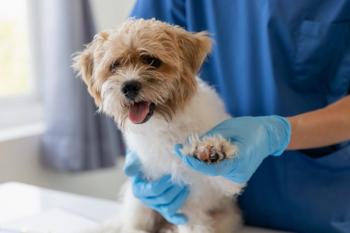
The cat came back: Bayer veterinary study focuses on feline
The Bayer Veterinary Care Usage Study: Feline Findings reveals medical need, practice opportunities in better care for unserved and underserved cats.
ORLANDO, Fla.--More than three-quarters of veterinarians believe that better care for cats is one of the most significant missed opportunities in practice today, according to a new study released at the North American Veterinary Conference. And capacity exists to serve those cats: Practices reported an average of 70 percent full appointments at their practice.
Data collected by Brakke Consulting in this, the third part of the Bayer Veterinary Care Usage Study, focused on how far the veterinary profession has come in encouraging better feline care and how far everyone has yet to go.
The study found that veterinarians recognize that cats’ resistance to veterinary visits plays a major factor in their lack of preventive and illness care, yet one-third of practices polled have not trained their staff on how to make those visits less stressful for pet owners. Suggestions made by feline-focused organizations and previous parts of the Bayer study are still under-adopted:
> 35 percent of practices use cat-only exam rooms.
> 18 percent include cat-only waiting areas that are physically and visually separated from dogs.
> 11 percent offer cat-only days and appointment hours.
Part of the reality of veterinary medicine, of course, may be that some veterinarians just aren’t “cat people,” says Dr. Elizabeth Colleran, owner of Chico Hospital for Cats in Chico, Calif., and past president of the American Association of Feline Practitioners.
“To some extent, veterinarians’ own biases may play a role in how they pursue feline patients,” says Colleran. “For example, the study found that, while veterinarians are nearly equally likely to own a dog or cat, 48 percent prefer dogs, while only 17 percent prefer cats.”
The study release was followed by news of a partnership between Bayer Healthcare and the American Association of Feline Practitioners, with an emphasis on the work the AAFP has done in recent years with its “Feline-Friendly Practice” program. Veterinary practices interested in improving their feline visits and feline care have turned to the initiative for help with feline-friendly makeover tips, marketing tools, and more.
The AAFP focused on some of those tips in a study section titled “What veterinarians can do now to increase cat visits”:
1. Find the unserved/underserved cats in your practice by ask about other household pets on every visit and tracking reminder compliance.
2. Educate cat owners on carrier use and transporting, considered the No. 1 obstacle to client visits.
3. Make reception areas as cat-welcoming as possible, with separate areas including visual barriers for dogs and cats.
4. Reserve one or more exam rooms for cats only.
5. Train all staff regularly in cat-friendly handling.
6. Review and refine exam protocols with an eye to feline comfort and better healthcare.
7. Talk through cats’ physical exams with clients so they can see and hear the value in head-to-tail exams of their feline pets.
8. Use and dispense feline-friendly medications. A number of products and services just for cats have emerged in recent years.
9. Send home exam reports every time on a cat’s current health, important next steps for vaccines, rechecks, etc.
10. Schedule the next exam before the cat leaves practice.
Bayer Healthcare and the AAFP promised results this year of further feline-focused research.
Newsletter
From exam room tips to practice management insights, get trusted veterinary news delivered straight to your inbox—subscribe to dvm360.




